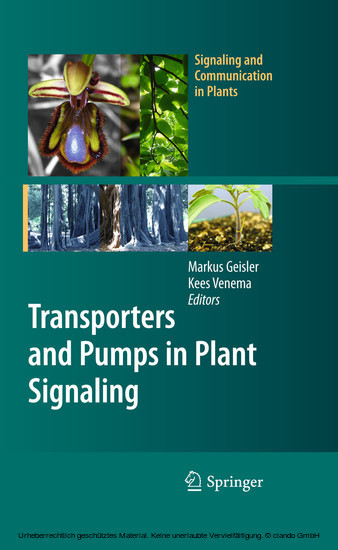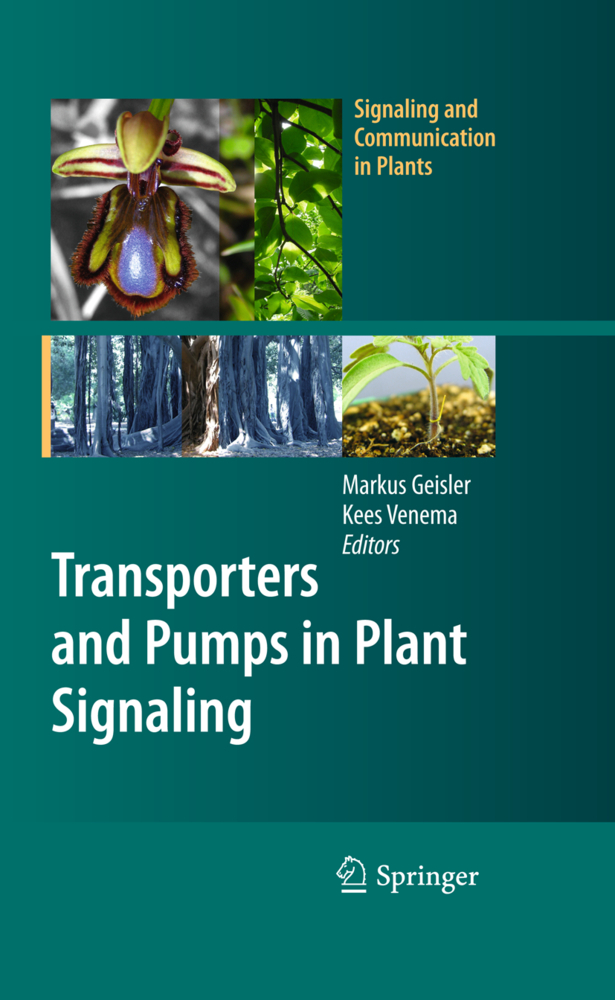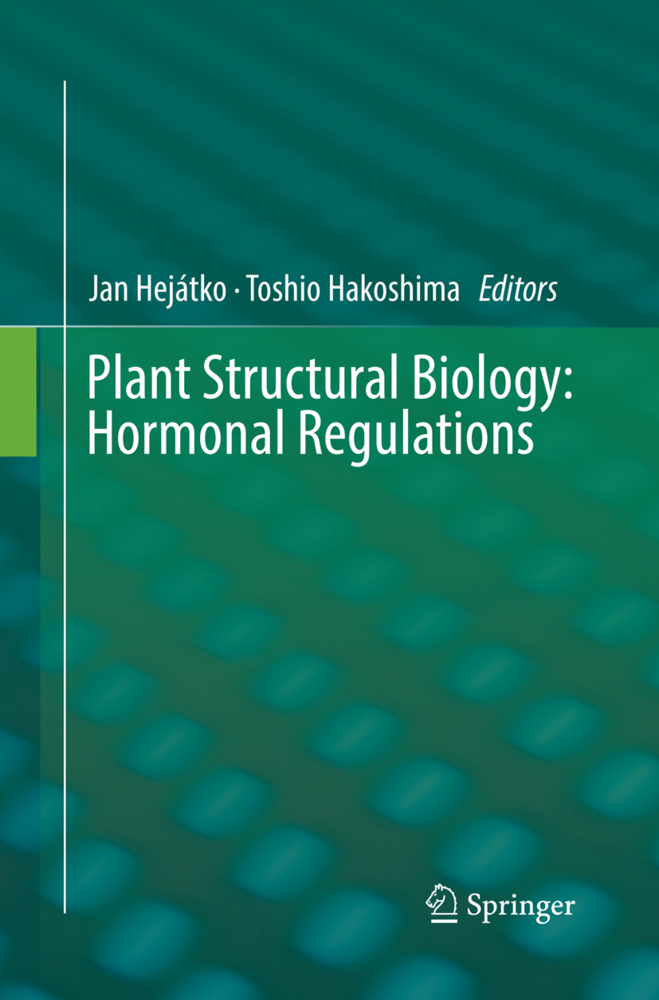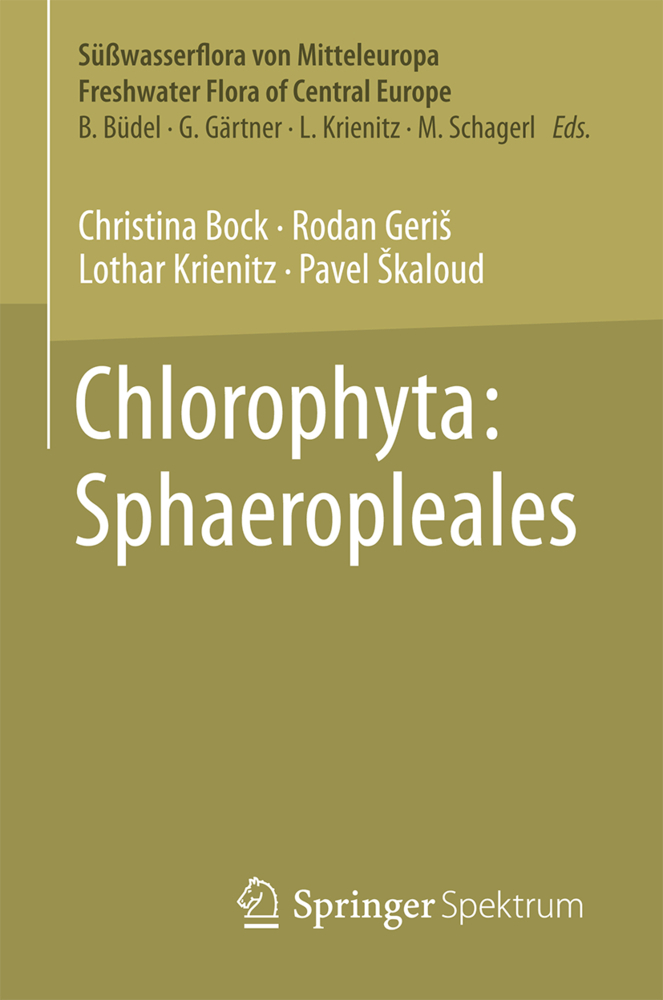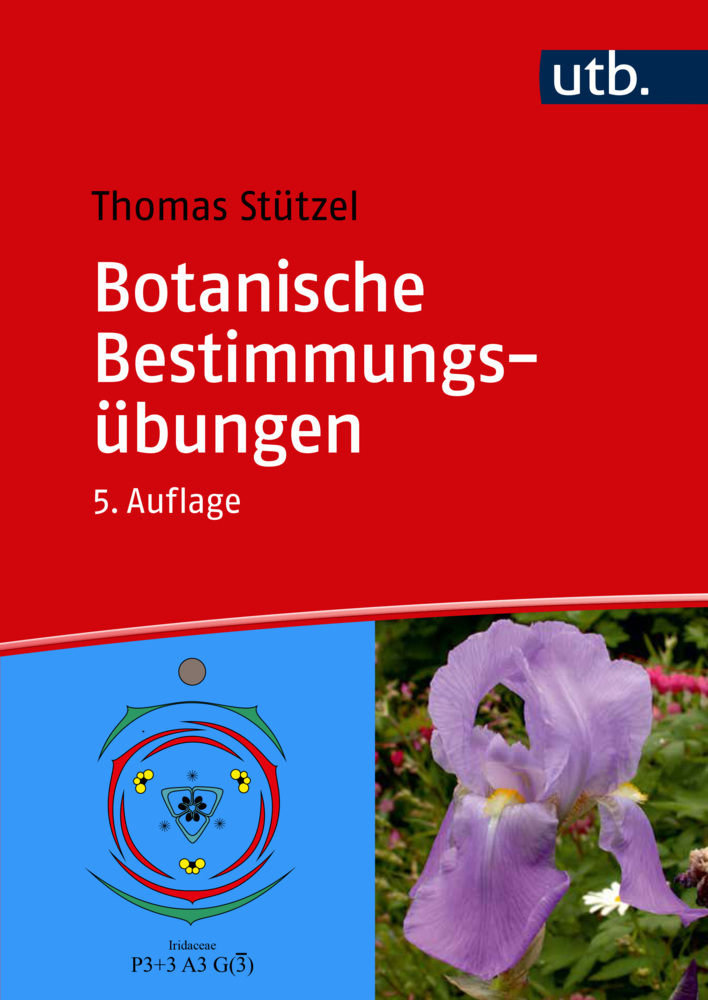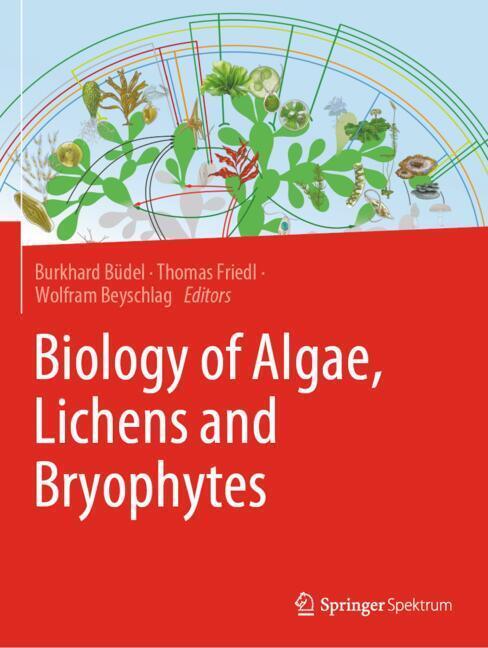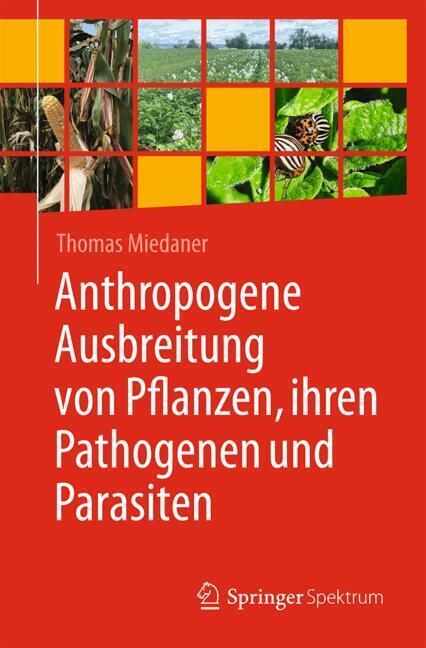Due to their sessile lifestyle, plants need to efficiently adapt to changing environmental conditions during their life cycle. Nutrient acquisition from the soil has to be able to adapt to considerable fluctuations in concentrations to ensure adequate distribution between tissues, cells and organelles. The storage and retrieval of nutrients, metabolites or toxic substances in vacuoles plays an important part in cellular homeostasis in plants. The long-range transport and maintenance of turgor is critically dependent on the availability of water and rate of evaporation, while at the same time photosynthetic products have to be transported to all plant parts. As a result plants contain a large number of ATP-dependent pumps and secondary transporters that, in order to adapt to the changing environment, need to be regulated by a complex network of sensing and signaling mechanisms.
1;Transporters and Pumps in Plant Signaling;3 1.1;Preface;5 1.2;Contents;7 1.3;Part I: Membranes and Water Transport;9 1.3.1;Plant Aquaporins: Roles in Water Homeostasis, Nutrition, and Signaling Processes;10 1.3.1.1;1 Introduction;10 1.3.1.2;2 Plant Aquaporins;12 1.3.1.2.1;2.1 Plasma Membrane Intrinsic Proteins;12 1.3.1.2.2;2.2 Tonoplast Intrinsic Proteins;13 1.3.1.2.3;2.3 Small Basic Intrinsic Proteins;14 1.3.1.2.4;2.4 Nodulin26-Like Intrinsic Proteins;16 1.3.1.2.5;2.5 X Intrinsic Proteins;17 1.3.1.2.6;2.6 Hybrid Intrinsic Proteins;17 1.3.1.2.7;2.7 GlpF-Like Intrinsic Proteins;17 1.3.1.3;3 Structural Features of Major Intrinsic Proteins;18 1.3.1.3.1;3.1 Aquaporin Structure;18 1.3.1.3.2;3.2 Aromatic/Arginine (ar/R) Constriction Region;19 1.3.1.3.3;3.3 Oligomer Formation;19 1.3.1.4;4 Why Do Plants Contain So Many MIP Isoforms?;21 1.3.1.4.1;4.1 MIP Function Related to Water Transport;22 1.3.1.4.2;4.2 MIP Function Related to Nitric Oxide Transport;23 1.3.1.4.3;4.3 MIP Function Related to Ammonia Transport;24 1.3.1.4.4;4.4 MIP Function Related to Urea Transport;25 1.3.1.4.5;4.5 MIP Function Related to Carbon Dioxide Transport;26 1.3.1.4.6;4.6 MIP Function Related to Hydrogen Peroxide Transport;27 1.3.1.4.7;4.7 MIP Function Related to Organic Acid Transport;28 1.3.1.4.8;4.8 MIP Function Related to Glycerol Transport;29 1.3.1.4.9;4.9 MIP Function Related to Boric Acid Transport;30 1.3.1.4.10;4.10 MIP Function Related to Silicic Acid Transport;31 1.3.1.4.11;4.11 MIP Function Related to Arsenite/Antimonite Transport;31 1.3.1.5;5 Conclusion;33 1.3.1.6;References;33 1.4;Part II: Signaling Related to Ion Transport;44 1.4.1;Plant Proton Pumps: Regulatory Circuits Involving H+-ATPase and H+-PPase;45 1.4.1.1;1 P-Type H+-ATPases;45 1.4.1.1.1;1.1 Arabidopsis Encodes 11 Members of H+-ATPases;46 1.4.1.1.2;1.2 Mechanism of Activation by 14-3-3 Proteins;47 1.4.1.1.3;1.3 Phosphoproteomic Studies of Plasma Membrane H+-ATPases;48 1.4.1.1.4;1.4 Controlling the Size of the Stomatal Pore;49 1.4.1.1.4.1;1.4.1 Opening of Guard Cells;49 1.4.1.1.4.2;1.4.2 Closure of Guard Cells;50 1.4.1.1.4.3;1.4.3 Pathogens Modulate the H+ Pumps to Invade Plants Through the Stomatal Pore;50 1.4.1.1.5;1.5 PKS5: A Protein Kinase Preventing Binding of 14-3-3 Protein;51 1.4.1.1.5.1;1.5.1 ScaBP1: A Calcium Binding Protein Modulating PKS5 Action;51 1.4.1.1.5.2;1.5.2 DnaJ: A Chaperone Like Protein Repressing PKS5 Activity;52 1.4.1.1.6;1.6 Nutrient Uptake and Responses to Changes in the Soil;52 1.4.1.1.6.1;1.6.1 Response to Limited Phosphate;53 1.4.1.2;2 Plant H+-PPases;53 1.4.1.2.1;2.1 Vacuolar H+-PPases in Fruits;55 1.4.1.2.2;2.2 Vacuolar H+-PPase Is a Key Player for Plant Salt Tolerance;56 1.4.1.2.3;2.3 Vacuolar H+-PPases in Maize Aleurone;56 1.4.1.2.4;2.4 Subcellular Localization of Plant H+-PPases;57 1.4.1.2.5;2.5 Are There Other H+-PPases in Plants?;58 1.4.1.2.6;2.6 Transcriptional Regulation of H+-PPases;58 1.4.1.2.6.1;2.6.1 Sugar Starvation;59 1.4.1.2.6.2;2.6.2 Pi Starvation;60 1.4.1.2.7;2.7 Puzzling Phenotypes Triggered by Altering the Expression of H+-PPases in Plants;60 1.4.1.2.8;2.8 Could the H+-PPase Affect Sucrose Phloem Loading?;61 1.4.1.2.8.1;2.8.1 PPi Concentrations Are Essential for Sucrose Phloem Loading;61 1.4.1.2.8.2;2.8.2 H+-PPase and H+-ATPase Localize in Close Proximity at the PM of Sieve Elements;61 1.4.1.2.8.3;2.8.3 Hypothetical Model;62 1.4.1.3;References;63 1.4.2;Na+ and K+ Transporters in Plant Signaling;71 1.4.2.1;1 Introduction;72 1.4.2.2;2 K+ Transport;72 1.4.2.2.1;2.1 K+ Uptake from Diluted Solutions and Plant Signaling;73 1.4.2.2.2;2.2 Transcriptional Regulation of High-Affinity HAK Transporters;74 1.4.2.2.3;2.3 Regulation of AKT1 Channels by Phosphorylation/Dephosphorylation;78 1.4.2.3;3 Sodium Transport;80 1.4.2.3.1;3.1 Sodium Influx at the Plasma Membrane;80 1.4.2.3.2;3.2 Sodium Efflux and Long-Distance Transport; the SOS System85 1.4.2.3.3;3.3 Transport at the Tonoplast for Na+ Sequestration;91 1.4.2.4;4 Concluding Remarks;94 1.4.2.5;Referen
| ISBN | 9783642143694 |
|---|---|
| Artikelnummer | 9783642143694 |
| Medientyp | E-Book - PDF |
| Auflage | 2. Aufl. |
| Copyrightjahr | 2010 |
| Verlag | Springer-Verlag |
| Umfang | 388 Seiten |
| Sprache | Englisch |
| Kopierschutz | Digitales Wasserzeichen |

